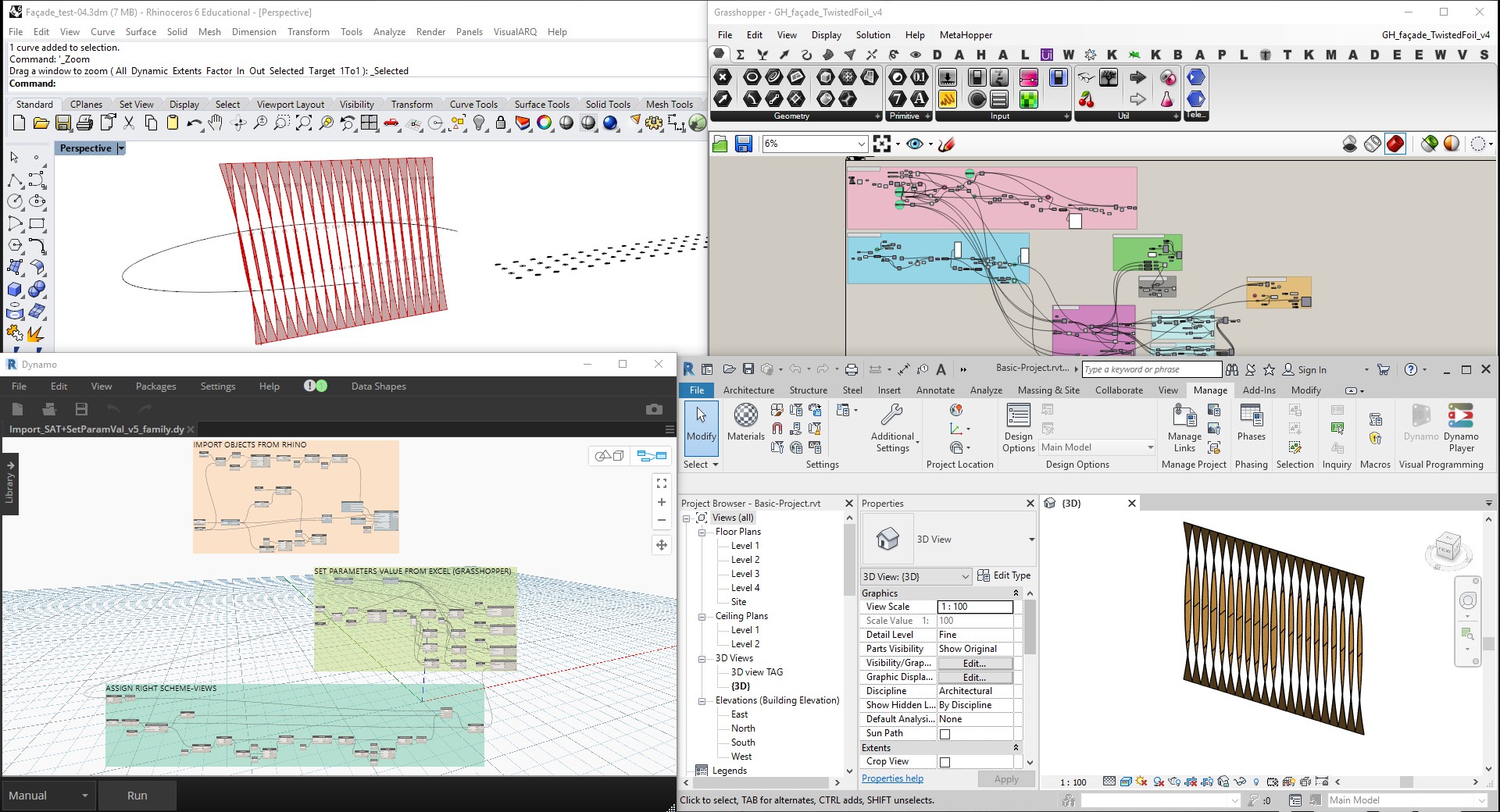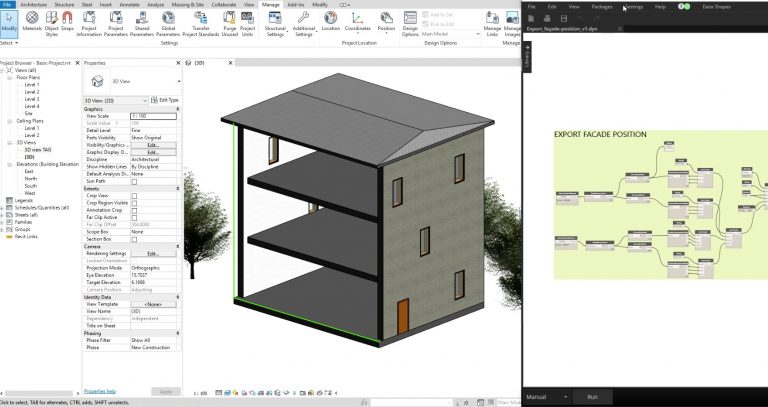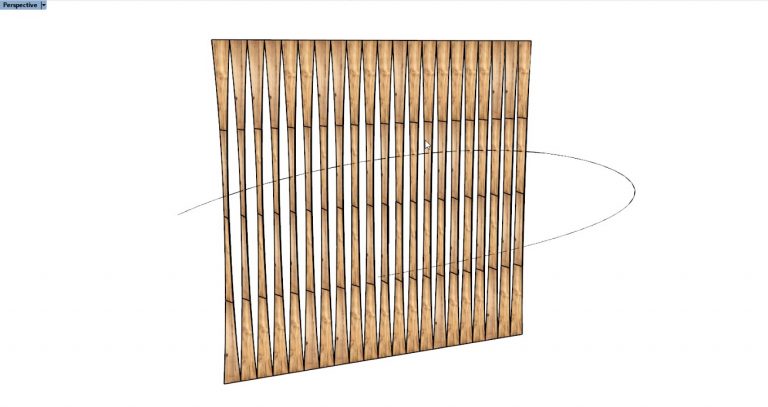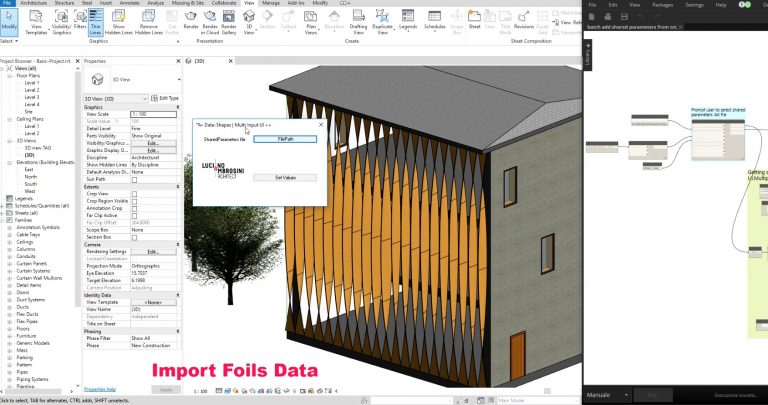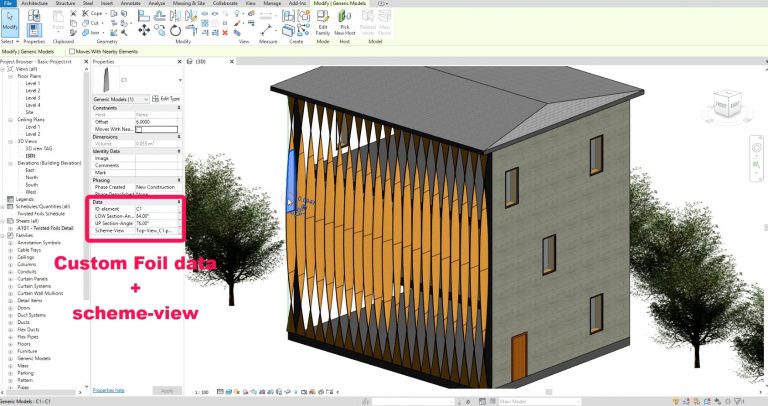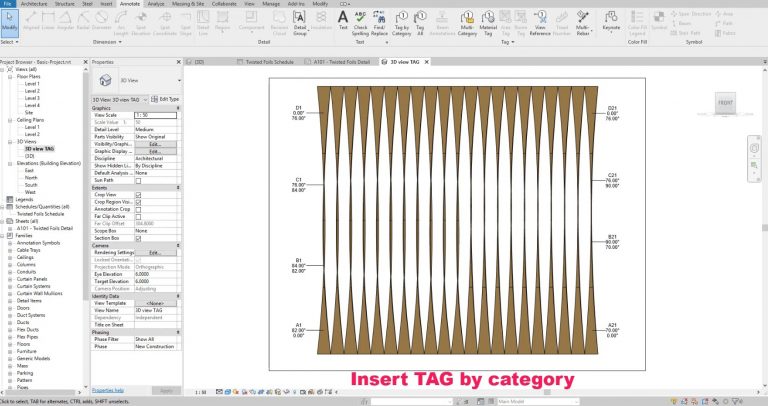These days I’m really regretting the good old flux.io and I really hope that soon returns in other guises. However, I have systematized a simple workflow that allows me to perform some practical interoperability operations (not live connections) between Revit+Dynamo and Rhino+Grasshopper. On the one hand for research purposes, on the other for personal curiosity, I wanted to reproduce the design of the facade of Liverpool Villahermosa by Iñaki Echeverria (but there are lots of other very similar examples such as the British embassy of John McAslan & Partners in Algiers).
the goal was to define a workflow that would allow me to freely develop the design of a generic façade system within Rhino (RH) and Grasshopper (GH) so to be able to transfer it, and its metadata, within the BIM-Revit platform thanks to some Dynamo algorithms.
In short (click to enlarge the images)
1) transfer of a reference system set in the BIM-Revit environment within RH;
2) transfer of the geometries from RH+GH to Revit+Dynamo;
3) production of metadata and detailed models within RH+GH;
4) Importing geometries and metadata into the BIM-Revit environment using Dynamo;
5) Display of the façade components schedule detail (a simple example);
From these cultural and practical speculations, it is possible to grasp the advantages and disadvantages of the software used, such as the need to create/manage Revit families directly from Dynamo more easily but also the need to define a terrain of comparison and interoperability between the main platforms of visual programming language such as Dynamo and GH.
At this point, the motto of Google’s Team X, which in the past has dealt with the splendid flux.io platform regarding the greater interoperability between the different sectors of the AEC industry – “share data no more models” – comes up again in a powerful way.
Below I propose a 5 minutes video in which the central part has been speeded up for reasons of time and not to bore you too much.

